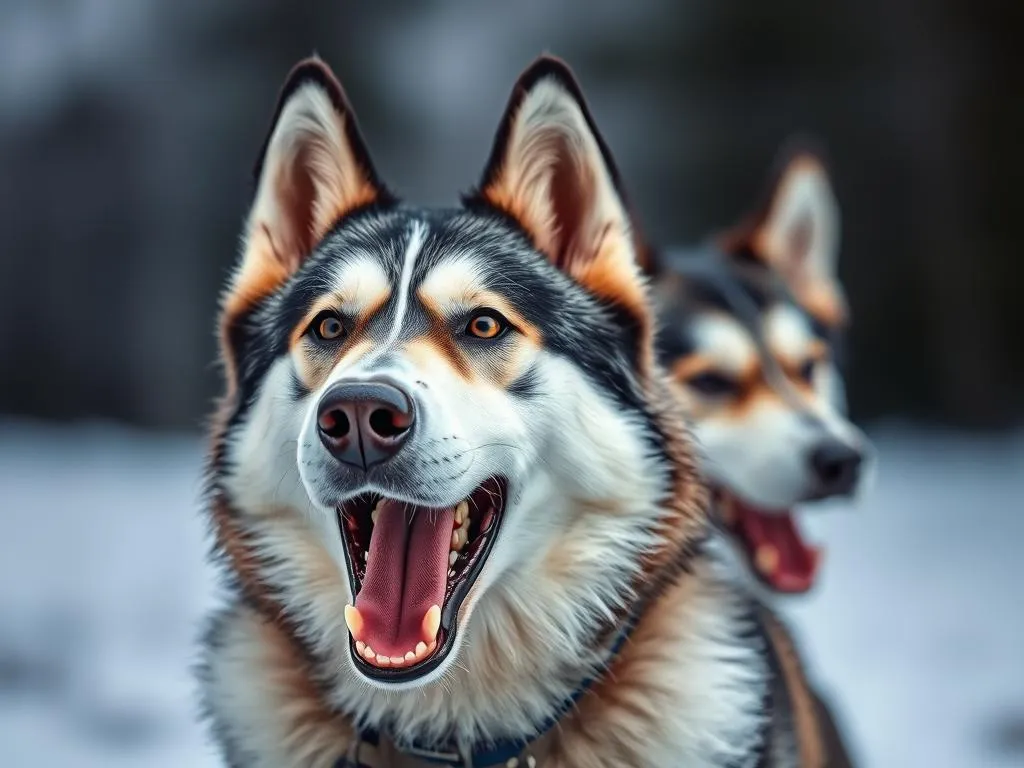
Introduction
Understanding dog behavior is a crucial aspect of pet ownership, encompassing everything from communication styles to emotional responses. As dog owners, it is essential to grasp the nuances of our furry friends’ behaviors to foster a harmonious relationship. This understanding becomes even more critical when dealing with specific breeds, such as the Siberian Husky, known for their distinct vocalizations and spirited nature.
Huskies are unique not only in appearance but also in their communication methods. They are often misunderstood due to common myths and misconceptions. Many people believe that all Huskies are aggressive or overly stubborn, but the truth is far more nuanced. This article aims to delve into one of the most intriguing aspects of Husky behavior: their tendency to scream.
Understanding Dog Communication
Types of Dog Vocalizations
Dogs communicate through a variety of vocalizations, including barking, whining, growling, and howling. Each of these sounds serves a different purpose and may vary based on the dog’s breed and environment. For instance, a dog might bark to alert their owner of an intruder, whine to express discomfort, or growl as a warning sign.
Huskies, in particular, have a diverse range of vocalizations. Their howls can be hauntingly beautiful and are often used to communicate with their pack. Screaming, however, is a more specific vocalization that can indicate various underlying emotions or needs.
The Role of Scream in Canine Communication
Screaming is less common than barking or howling but is a significant part of a Husky’s vocal repertoire. It typically occurs when a dog is feeling extreme emotions—be it fear, excitement, or even frustration. Understanding the context in which a Husky screams is crucial for owners who want to decipher their dog’s communication effectively.
The vocal range of dogs varies by breed, and Huskies are known for their expressive sounds. Screaming is distinct from other forms of vocalization and often indicates a heightened state of emotion or urgency.
The Siberian Husky: A Unique Breed
Breed Overview
The Siberian Husky has a rich history as a working dog, originally bred by the Chukchi people of Siberia for sled pulling and companionship. Their endurance, strength, and ability to withstand cold climates made them invaluable to these communities. Over time, Huskies have evolved into beloved family pets, cherished for their loyalty and playful spirit.
Physically, Huskies are striking dogs, characterized by their thick double coat, erect triangular ears, and expressive eyes that can be blue, brown, or even one of each. Their temperament is equally notable; they are known for their friendly nature and boundless energy.
Common Behavioral Traits of Huskies
Huskies are energetic and playful, requiring ample physical and mental stimulation. They are intelligent but often display an independent streak, which can sometimes be misconstrued as stubbornness. Understanding these traits is vital for potential Husky owners, as they can influence how a Husky behaves in various situations.
Why Do Huskies Scream?
Natural Instincts and Communication
The screaming behavior in Huskies can often be traced back to their history as sled dogs. In the wild, these dogs would communicate with their pack through a range of vocalizations, including screams. This behavior was essential for coordinating movements and maintaining contact over long distances. Therefore, it’s essential to recognize that screaming is often a part of their natural instincts, rooted in their working background.
Emotional Expressions
Huskies are incredibly expressive dogs. They often scream when experiencing strong emotions such as fear, excitement, or anxiety. For example, a Husky may scream when they see another dog or when they are about to go for a walk—both situations can elicit intense feelings.
Anecdotes from Husky owners frequently illustrate this point. One owner reported that their Husky would scream with joy every time they returned home, while another noted that their dog would scream when faced with unfamiliar situations, such as visiting the vet. These emotional triggers underscore the importance of understanding what lies beneath the surface of this vocal behavior.
Attention-Seeking Behavior
Another reason Huskies scream is to garner attention from their owners. This breed is known for being social and interactive; therefore, if they feel ignored or bored, they may resort to screaming to get their owner’s focus. This behavior can escalate if not addressed, leading to a cycle where the dog learns that screaming is an effective way to receive attention.
To manage this, it’s vital for owners to establish boundaries and ensure their Husky has plenty of engaging activities to keep them occupied.
Health-Related Issues
While screaming can often be attributed to emotional expressions or communication, it’s essential to consider potential health-related issues. Conditions such as pain, discomfort, or even allergies can lead to excessive vocalizations. If a Husky begins to scream more frequently than usual or displays signs of distress, it is crucial to consult a veterinarian. Early intervention can prevent more serious health issues from developing.
Managing and Modifying Screaming Behavior
Training Techniques
Training is an effective way to manage a Husky’s screaming behavior. Positive reinforcement techniques, such as rewarding calm behavior with treats or praise, can help reduce excessive vocalizations. Commands like “quiet” or “enough” can be taught, providing the Husky with clear expectations regarding their vocalizations.
Consistency is key. If owners apply training techniques sporadically, the dog may not understand what is expected, leading to frustration for both the owner and the Husky.
Creating a Calm Environment
Huskies thrive in environments where they can expend their energy. Creating a calm, structured environment is essential for managing their screaming. Regular physical exercise, such as daily walks or playtime in the yard, can help keep a Husky mentally and physically stimulated.
Engaging activities, such as puzzle toys or obedience training, can also provide mental stimulation. The more engaged a Husky is, the less likely they will resort to screaming out of boredom or frustration.
Professional Help
If a Husky’s screaming persists despite training efforts, seeking help from professional dog trainers or behaviorists may be necessary. These professionals can offer tailored strategies and insights based on observing the dog in various situations. Finding a qualified trainer or behaviorist can be invaluable for owners struggling with their Husky’s vocalizations.
FAQs About Husky Behavior
Is screaming a sign of aggression?
Screaming is generally not a sign of aggression in Huskies. Instead, it typically indicates strong emotions such as fear, excitement, or a desire for attention. Understanding the context of the scream is crucial for interpreting the behavior correctly.
Do all Huskies scream?
Not all Huskies scream, but it is a common trait among the breed. Individual temperament and upbringing can influence whether a Husky is more vocal than others.
How can I train my Husky to stop screaming?
Training your Husky to stop screaming involves using positive reinforcement techniques, establishing commands, and ensuring your dog receives adequate exercise and mental stimulation. Consistency in training practices is essential for success.
Are there specific triggers for my Husky’s screaming?
Yes, specific triggers can lead to screaming in Huskies. These may include excitement, fear, anxiety, or a desire for attention. Observing your Husky’s behavior in various situations can help identify these triggers.
Conclusion
Understanding why Huskies scream is integral to fostering a positive relationship with this unique breed. By recognizing the underlying causes—be it natural instincts, emotional expressions, attention-seeking behavior, or health-related issues—owners can better manage and modify this behavior.
As Husky owners, it is vital to observe and adapt to your dog’s unique communication style. With patience and proper training, it is possible to create a harmonious living environment for both you and your Husky, allowing for a fulfilling and enjoyable companionship.
Understanding your Husky’s behavior is not just about addressing screaming; it’s about fostering a deeper connection through effective communication and mutual respect.









